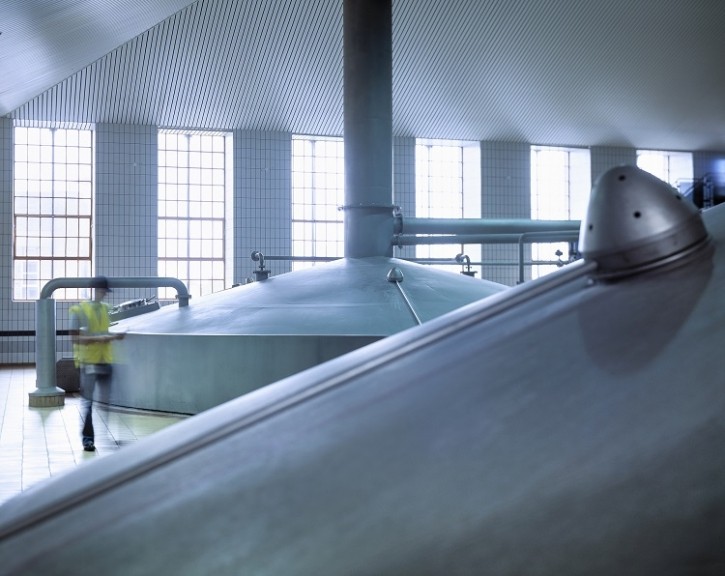The no alcohol beer category presents a big opportunity for brewers. The category grew at a CAGR of almost 8% between 2021 and 2023, according to market analyst IWSR, which has start-ups and established beer companies alike, looking to take a piece of the 0.0% ABV pie.
But as a reformulated version of a well-known product, consumers are quick to compare zero alcohol beer to its full-strength counterpart. Beers that fail to deliver on flavour and body – whether free-from alcohol or not – are likely to struggle.
How can brewers win on zero alcohol formulations? Once ingredients are selected, it all comes down to brewing technique, according to Anheuser-Busch InBev (AB InBev), which has developed its own technology to favour beer body and aroma in 0.0% ABV offerings.
The evolution of non-alcohol beer brewing
These days, no alcohol beer is commonplace on- and off-trade. According to IWSR, more than 85% of no alcohol beer consumers are also alcohol consumers.
This trend is relatively new, but non-alcoholic beer is not. It’s thought the first alcohol-free beer brewed since medieval Europe (when low alcohol beers were often safer to drink than water) dates back to the Prohibition era in the US.
No alcohol beers (0.5% ABV and less) reemerged in the 1970s, but it wasn’t until the 2010s that 0.0% ABV beers came onto the scene.
Prior to 2010, two main brewing technologies were available to beer makers, explained AB InBev’s David De Schutter, who heads up the brewery’s Global Innovation and Technology Center (GITEC).
The first was based on alcohol evaporation: brewing a regular beer, heating it to a high temperature (alcohol boils at around 72˚C), and evaporating off the alcohol. “Evaporation technology at that time was not as advanced, so we had to evaporate a lot of the water and the alcohol at the same time, and all the aroma disappeared,” said De Schutter on a recent visit to AB InBev’s brewery in Leuven, Belgium.
“Plus, we were heating the beer a lot, so it was a little bit cooked, a bit acidic, not really refreshing, and was lacking the typical beer flavour. It was also not 0.0% ABV, but between zero and 0.05% ABV.

The other technique has a few different names, including controlled fermentation, arrested fermentation, and stopped fermentation. In this process, the brewing process starts the same way (grains are converted into sugars), but the yeast is added for only a few hours at a very low temperature. Under these conditions, the yeast is unable to covert all the sugar into alcohol.
The result? A sweet beer lacking in typical beer aromas, explained De Schutter. And just like the alcohol evaporation method, is unable to produce a 0.0% ABV beer.
Zero alcohol beer with no ‘burnt’ notes’? Enter vacuum distillation
Neither of these techniques are used by AB InBev today. By the 2010s, the brewery was laser-focused on making a 0.0% beer. The solution? To adapt the brewing process.
“We created a different brewing process,” explained De Schutter. To begin with, AB InBev brews the beer in a way that reduces the amount of alcohol produced by the yeast. Whereas in conventional brewing, the starch is hydrolysed into simple sugars by enzymes, in AB InBev’s no alcohol brewing technique the enzymes are partially inactivated, which means the starch is only partially hydrolysed.
The result is that the yeast has less sugar to ferment, making for less alcohol in the beer.
![Photo_STYN.be-14[1]](http://www.foodnavigator.com/var/wrbm_gb_food_pharma/storage/images/_aliases/wrbm_large/media/images/photo_styn.be-14-1/17394051-1-eng-GB/Photo_STYN.be-14-1.jpg)
The second part of the process is dealcoholisation using a technique known as vacuum distillation. Whereas alcohol usually boils at around 72˚C, in a high vacuum AB InBev can distill the alcohol at a much lower temperature – less than 40˚C. “We’re not cooking it and we don’t obtain burnt notes,” explained De Schutter. Some aroma is lost in the process, which the brewery works to rebalance, but overall the process results in a ‘much better-balanced beer’.
The use of membrane filtration for some beers has also helped to preserve aromas.
Achieving better body and aromas
AB InBev’s process also makes for better body and aromas in the finished product, believes the innovation and technology chief.
How is body developed in a non-alcoholic beer? AB InBev uses unfermentable sugars known as dextrins. By partially inactivating the enzymes, the process allows
![Photo_STYN.be-41[1]](http://www.foodnavigator.com/var/wrbm_gb_food_pharma/storage/images/_aliases/wrbm_medium/media/images/photo_styn.be-41-1/17394069-1-eng-GB/Photo_STYN.be-41-1.jpg)
for more dextrins in the final product, which the yeast cannot feed on. “In the absence of alcohol, you need something else that replaces the body in the beer, and that’s what these dextrins do,” explained De Schutter.
Aroma is another characteristic of beer that can suffer without the presence of alcohol. AB InBev has developed its own aroma technology based on flavour interactions in conventional beer and no alcohol beer. The patented flavour addition aims to bring the taste closer to beer and compensates for the loss of alcohol.
Around 250 different volatile components are responsible for the aroma of beer. Some are hydrophobic – meaning they’ll try to escape from low alcohol beer – and some are hydrophilic. The latter can handle ethanol but prefers water. “We know that these behave differently in alcohol beer [compared] to no alcohol beer.”
In no alcohol beer, therefore, the more hydrophobic the flavour component, the less is required, revealed De Schutter. “That’s the secret sauce.”
Combining these different technologies has allowed the brewer to achieve products it considers significantly closer to their conventional counterparts. “We’ve obtained very good results,” revealed the innovation and technology lead.
Beers currently using these technologies include non-alcoholic versions of Corona, Jupiler, Hertog Jan and Stella Artois.
